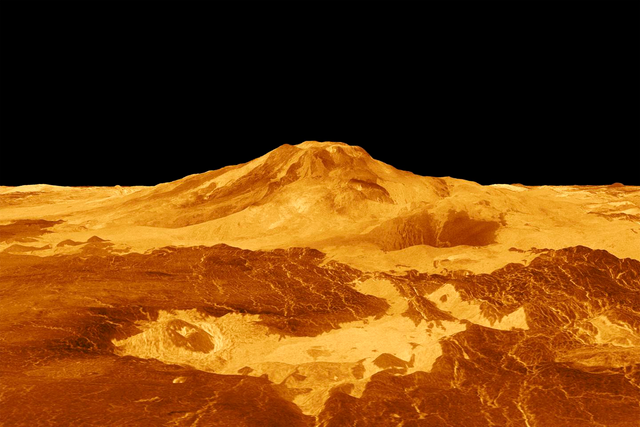Hot planet Venus. Amazing facts

Hello everybody!
Venus is the second farthest from the Sun and the sixth largest planet in the solar system, along with Mercury, Earth and Mars, belonging to the family of terrestrial planets. Named after the ancient Roman goddess of love Venus.
Venus is the first planet that scientists have discovered. Thanks to the Venera-8 space station, which was the first to land on the Venusian surface, unique images were obtained. And Venus-17 recorded sounds and panoramic color photographs. All this helped scientists to learn much more about Venus. What is it, the hottest planet in the solar system?
Twin planet
Previously, Venus was considered the twin of the Earth. They are approximately the same in size, the difference in diameter is only 650 km in favor of the latter. And the mass of Venus is 81% of the mass of the Earth. The force of gravity is also close: 1 Earth's kilogram is equal to about 850 grams.
Life is not possible on the surface of the fiery planet, but at an altitude of 60 km the atmospheric conditions are close to those on Earth. The only difference is the lack of oxygen. Venus also has an ozone layer, it is located at an altitude of 100 km from the surface, at the ground at 15-20 km.
No satellites
Venus does not have a single satellite. Even Pluto, which has ceased to be considered a planet due to its small size, has one. Perhaps, Venus had them earlier, but either the satellites moved away, or crashed on its surface.

The hottest planet
The atmosphere of Venus is composed of carbon dioxide and nitrogen, which creates a greenhouse effect on the surface. The temperature on the planet reaches 470 degrees and lasts all year. Venus does not have a change of seasons, it is always hot there.
Not like everyone else
Unlike other planets, Venus rotates clockwise around its axis, and very slowly. 1 Venus day corresponds to 243 Earth days. But it goes around the Sun in 224 days.
Closest to Earth
The distance between Venus and Earth is the shortest compared to other planets. It is 38 million kilometers, while the Earth is separated from Mars by 56 million kilometers. The longest distance with Venus is 261 million km.
The brightest
For earthlings, Venus is second only to the Sun and the Moon in brightness. It can be seen from the earth's surface both at night and during the day. It is visible to the naked eye. She is even able to create a shadow in the absence of the moon.
Not fit for life
Venus has the most unfavorable atmosphere for life. The pressure on the hot planet is 92 times that of the Earth. It acts approximately as if a person were placed in the ocean at a depth of 1 km. Due to the high pressure, the gas is pressed into the surface of Venus, turning into a supercritical liquid, which in its properties does not correspond to either gas or liquid.

A snapshot of the surface of Venus
The clouds that often appear in the sky are composed of sulfur dioxide and droplets of sulfuric acid. By the way, raindrops do not fall on the surface, because evaporate before flying. The clouds are very thick, so they hardly let in sunlight, and also prevent the surface from radiating from space. Landing an interplanetary station in such conditions is quite difficult, but possible. True, it will not work for long, the maximum recorded time of stay on Venus is 127 minutes.
No craters
There are no craters on Venus. There is an assumption, this is due to the fact that they are filled with volcanic lava, which covers 90% of Venus. The surface of the planet is quite young, according to scientists, it is about 500 million years old.
Despite the fact that the surface of Venus is completely unsuitable for life, scientists thought about sending colonists to it. True, it would have to stop at an altitude of about 52 km, where the temperature would be about 30 degrees, and the atmosphere is still capable of protecting from radiation. The colonists would live in balls filled with a mixture of nitrogen and oxygen. And they would be protected from sulfuric acid by Teflon, from which the top layer of balls would be made.
For more,you can visit this community
JOIN WITH US ON DISCORD SERVER: